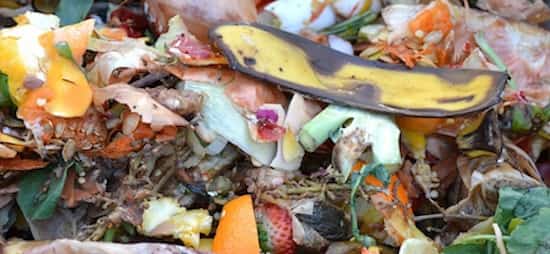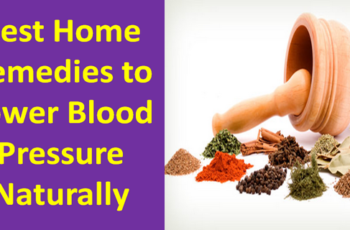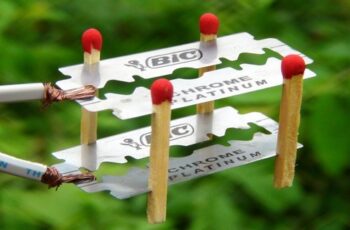Ad Blocker Detected
Our website is made possible by displaying online advertisements to our visitors. Please consider supporting us by disabling your ad blocker.
Kitchen and yard scraps can be mixed with microbes and air to create a nutrient-rich compost that can make plants grow well. Banana peels, in particular, are incredibly useful in the garden. Tomatoes, for example, love the potassium-rich banana peel fertilizer.
Instead of tossing the peel in the trash, it can be mixed with water and left to ferment, creating a powerful fertilizer. Banana peels may be the most valuable kitchen scrap for gardening purposes. Don’t overlook the humble banana peel, which may be seen as a mere nuisance in Mario Kart, but is a valuable resource for gardeners. Once you discover the many benefits of banana peels, you may never throw them away again.
What’s the deal with banana peel fertilizer?

The macronutrient trifecta – nitrogen, phosphorus, and potassium – is well-known among gardeners because they are crucial for plant growth and health. Commercially made fertilizers always indicate the fertilizer grade on the packaging because of this importance.
While each plant has unique nutrient needs, banana peel fertilizer surprisingly benefits many of them. Banana peels are an excellent source of organic potassium, which is essential for almost every chemical and metabolic process in a plant’s life cycle. Potassium moves nutrients and water from cell to cell controls enzymes, and aids in photosynthesis, among other things.
To achieve big, healthy plants with attractive blooms or delicious fruit, potassium is a must-have in your fertilizer. Additionally, banana peels contain calcium, manganese, sulfur, and magnesium, which are essential for general plant health. These nutrients play various roles in maintaining plant health, from photosynthesis to regulating water movement among cells.
Banana peel fertilizer is perfect for plants with low nitrogen requirements, such as tomatoes, peppers, cucumbers, and radishes, as banana peels do not contain nitrogen. However, even nitrogen-loving plants benefit from banana peel fertilizer because the calcium content in banana peels makes it easier for plants to absorb nitrogen in the soil.
How to Make Banana Peel Fertilizer
Creating Banana Peel Fertilizer
This straightforward fertilizer can work wonders when you apply it to your plants. You will need:
- Banana peels • One-quart Mason jar • Mason jar lid • Distilled water
Instructions:
- Place a banana peel in a clean jar.
- Fill the jar with water and seal it with the lid.
- Allow the mixture to sit for one to two weeks, then remove and discard the banana peel.
- Dilute the resulting fertilizer with water in a 1:4 ratio.
- Witness your plants thrive and produce bigger yields.
Double the Recipe
If you desire a larger supply on hand, you can easily double or even triple the recipe by using a bigger container and adding more banana peels.
How to Use Banana Peel Fertilizer
 Ben_Kerckx via Pixabay
Ben_Kerckx via PixabayUsing banana peel fertilizer can greatly enhance the growth of your plants. To use it, water your plants at the base with the diluted fertilizer once a week. It may take some time to see results, but if you use this fertilizer continuously starting at the beginning of the growing season, you’ll notice a significant improvement.
This nourishing fertilizer tea is particularly beneficial for plants such as tomatoes, summer squash, cucumbers, eggplants, and roses.
Potassium Deficiency in the Garden
Here are some indications that your plants require more potassium:
- Yellowing of leaves on the lower half of the plant is the initial sign of potassium deficiency. • The root system may not develop well. • Your plant’s growth may slow or halt entirely. • A plant that is deficient in potassium may not recover well from a drought. • The vegetables produced by the plant may not ripen evenly.
More Banana Peel Uses In The Garden
Banana peel fertilizer is not the sole way you can utilize banana peels in your garden. Here are some other creative ways to employ this common kitchen waste. (I can’t resist a clever pun either.)
-
Bug Buster
To repel aphids, dilute banana peel fertilizer can be sprayed on plants or chopped banana peels can be buried around the base. Alternatively, banana peels and apple cider vinegar can be used to create a bug trap. Simply add chopped banana peels and a small amount of apple cider vinegar to a jar, place a funnel in the container, and wait for the bugs to get trapped. After 48 hours, discard the trap and repeat the process.
-
Plant a Peel
To give your potassium-loving plants a great start to the season, simply place a piece of banana peel directly into the bottom of each hole or container as you transplant them. The peel will decompose rapidly, providing the necessary nutrients for your plants to thrive.
-
Give Seeds a Head Start
Rewritten: Provide an additional boost to your seeds during germination using banana peels. Simply insert a piece of banana peel into the hole and place the seed on top or put the seed directly on a piece of banana peel before covering it with soil. Water the seed and wait for it to sprout.
-
Banana Peel Powder
To make a powder fertilizer from banana peels, dry them on the lowest setting in your oven or leave them to dry in the sun for a few days. Cut them into 1″ pieces and ensure they don’t touch each other while drying. Once dried, crush the peels into a fine powder using a mortar and pestle or an old coffee grinder. Keep the powder in a sealed jar or baggie. Loosen the soil around the base of each plant and sprinkle one or two tablespoons of the powder over the soil. Thoroughly water the plant and let the banana peel powder work its magic.
5. Chopped Banana Peel Mulch
Placing chopped banana peels at the base of your potassium-loving plants, such as hot peppers, can provide them with a nutrient boost. Simply add a small handful of chopped banana peels to each plant’s base, and let the peels break down naturally to release nutrients into the soil. It’s a simple and effective way to give your plants the nourishment they need.
-
Banana Peel Vinegar for Acid-Loving Plants
If you want to create an acidic fertilizer for your acid-loving plants, try fermenting banana peels to produce a vinegar-like mixture. Here’s how to do it:
- Chop up a banana peel into small pieces and add them to a mason jar.
- Pour in enough water to cover the peels and leave an inch of headspace.
- Cover the jar with a double layer of cheesecloth and place it in a warm spot for a week.
- After a week, remove the peels and cover the jar again with the cheesecloth. Let it ferment for another month.
- Dilute the fermented vinegar with an equal amount of water and use it to feed your acid-loving plants every other week.
- Winter Soil Booster
At the end of the growing season, incorporate banana peels into your garden soil by tilling or digging them under. Over the winter months, the peels will decompose and enrich the soil with valuable nutrients. For those with a large garden, consider asking a nearby smoothie shop to save their banana peels for a few days.
- Wipe Houseplant Leaves
Wiping down your houseplant leaves with the inside of a banana peel can remove dust buildup that may hinder their growth by impeding their ability to absorb sunlight and photosynthesize.
- If All Else Fails – Compost Them
Banana peels are a great addition to the compost bin, breaking down quickly compared to other vegetable and fruit scraps. If you’re unsure what to do with your banana peels, simply adding them to your compost is a great option.
You can go to the next page to read the rest of this article

